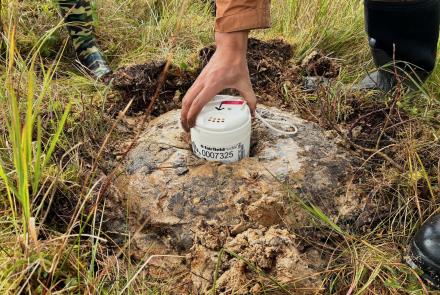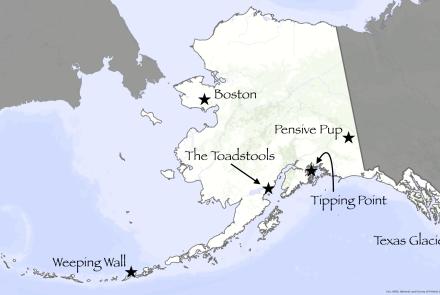Eight Tiny What?
It was an important holiday tradition: as soon as the tree was trimmed to the last dangle of tinsel, we'd settle down with cocoa while my father began to read: " 'Twas the night before Christmas, and all through the house..."
Even when I was very young, I was impressed by how clearly Clement Moore, the author of "A Visit from St. Nicholas," had observed those extraordinary events. I knew I'd have been too startled to notice soot on Saint Nick's clothes, or to count the number of tiny reindeer hitched to the sleigh. Somewhere back then, I decided that Moore had been a good naturalist, a keen observer of the world around him.
That was before I met my first reindeer. It was tied to a parking meter in downtown Anchorage. Antlerless at that season, the reindeer looked more nearly bovine than deerlike. It was not tiny. I was not impressed.
In the years since, I've learned to be impressed by reindeer and their New World conspecifics, the caribou. They've evolved to cope superbly with the challenges of life in the north. But tiny they are not. Had Clement Moore perhaps not been so observant after all? The possibility was distressing.
Then, in the course of shunting old magazines off for recycling,I came across an advertisement featuring a photograph of some uncommonly handsome caribou. These animals seemed shaggier yet more delicate than the caribou I'd seen crossing interior Alaska hillsides. Their coats were paler, too, with white coming higher on their buffy flanks. I read the brief photo caption: Peary caribou, the northernmost of the caribou clans, and also the smallest. An adult Peary caribou may be the size of a large dog.
Hmmmm. Really, why should a poet know that a caribou was not a reindeer? Especially a poet writing back whenever it was--I called the reference desk at the Noel Wien Library. The helpful folks there soon reported that the classic poem was first published in 1823, but evidently the author had written it earlier, just for his own children. That early in the century, Americans surely weren't attuned to deer delineation.
Contemporary Alaskans, on the other hand, can find the appropriate expertise fairly easily. Ray Cameron, now retired from the Alaska Department of Fish and Game, was the first expert I found. Peary caribou? I asked. Size of a big dog? Huge dog, maybe, he said, but eventually allowed that as caribou go, at perhaps 130 pounds and a foot shorter than an Alaska caribou, a full-grown Peary could fairly be called "tiny." Within a few days, he provided more information about Peary caribou--about three pounds' worth of reading material.
The evidence was encouraging. Though reindeer and caribou are all members of the same species, separate subspecies occupy different habitats. The caribou familiar to Alaskans and northern-dwelling Canadians are known as barren-ground caribou, chiefly because early European explorers thought tundra looked barren. To the south live woodland caribou; once, these animals could be found throughout the boreal forest, as far south as parts of the northernmost United States.
And to the north, on the islands of the Canadian High Arctic, about as far toward the North Pole as land exists, the tough little Peary caribou live. They swim across the icy channels between the islands; they haunt the windswept places, where snow blows clear of their sparse food. They live so far north that the Inuit people and even wolves seldom hunted them. But early polar explorers did; members of W.E. Parry's expedition shot some "deer" on the islands, as he reported in 1821--shortly before Moore wrote his poem.
Tough, tiny, and native to the farthest north: perhaps Dasher, Dancer and friends are really Peary caribou. And, since winter is a very hungry time for the shaggy little deer of the extreme Arctic, those Christmas Eve carrots and cookies are probably most welcome.



